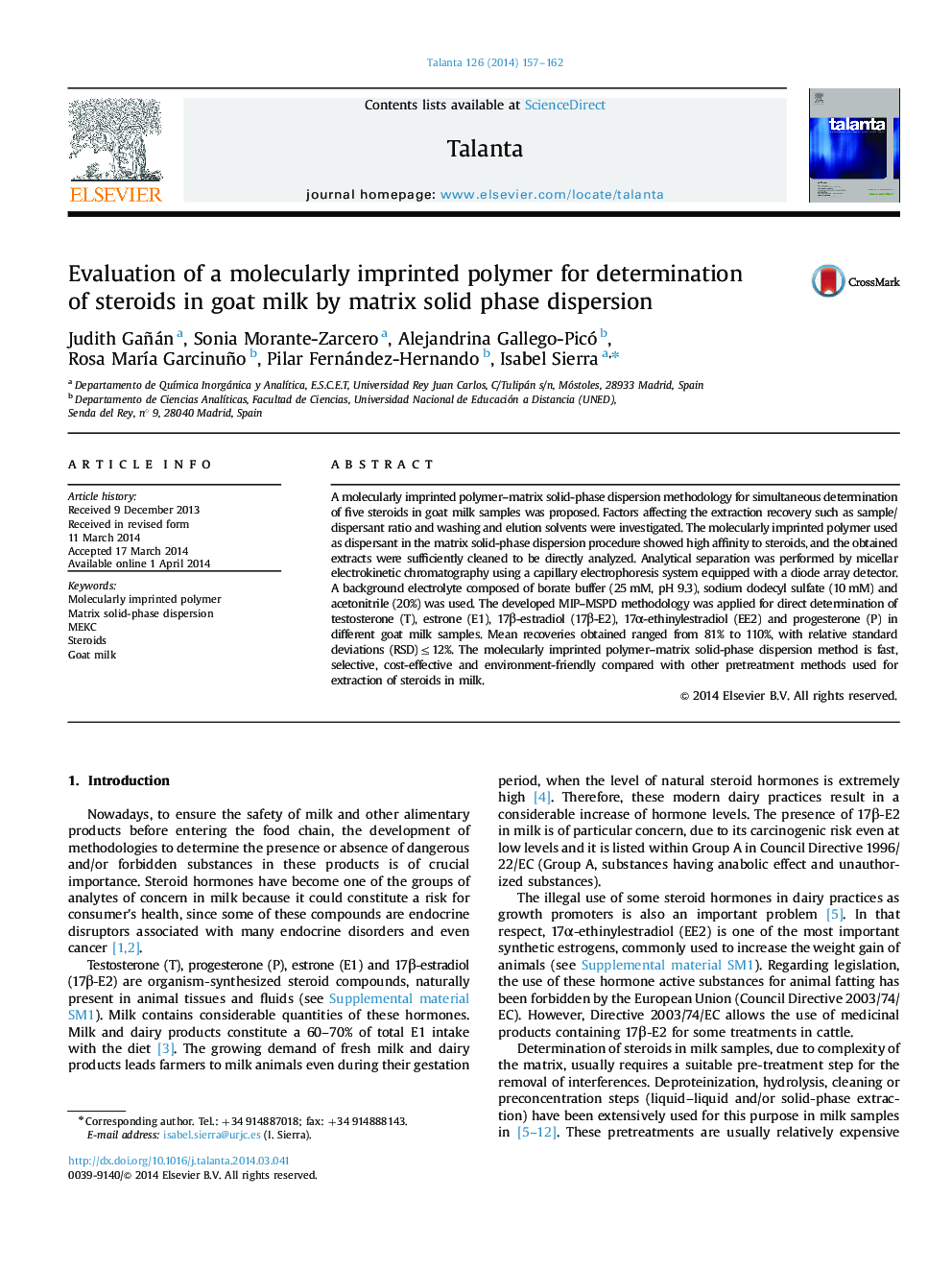| کد مقاله | کد نشریه | سال انتشار | مقاله انگلیسی | نسخه تمام متن |
|---|---|---|---|---|
| 1242286 | 1495809 | 2014 | 6 صفحه PDF | دانلود رایگان |
• MEKC–DAD has been applied for the first time to the analysis of steroids in milk.
• A MIP was satisfactorily used as selective solid support for MSPD in steroids analysis from milk samples.
• Mean recoveries for the target steroids ranged from 81% to 110%, with RSD≤12% under optimized conditions.
A molecularly imprinted polymer–matrix solid-phase dispersion methodology for simultaneous determination of five steroids in goat milk samples was proposed. Factors affecting the extraction recovery such as sample/dispersant ratio and washing and elution solvents were investigated. The molecularly imprinted polymer used as dispersant in the matrix solid-phase dispersion procedure showed high affinity to steroids, and the obtained extracts were sufficiently cleaned to be directly analyzed. Analytical separation was performed by micellar electrokinetic chromatography using a capillary electrophoresis system equipped with a diode array detector. A background electrolyte composed of borate buffer (25 mM, pH 9.3), sodium dodecyl sulfate (10 mM) and acetonitrile (20%) was used. The developed MIP–MSPD methodology was applied for direct determination of testosterone (T), estrone (E1), 17β-estradiol (17β-E2), 17α-ethinylestradiol (EE2) and progesterone (P) in different goat milk samples. Mean recoveries obtained ranged from 81% to 110%, with relative standard deviations (RSD)≤12%. The molecularly imprinted polymer–matrix solid-phase dispersion method is fast, selective, cost-effective and environment-friendly compared with other pretreatment methods used for extraction of steroids in milk.
Figure optionsDownload as PowerPoint slide
Journal: Talanta - Volume 126, 1 August 2014, Pages 157–162
